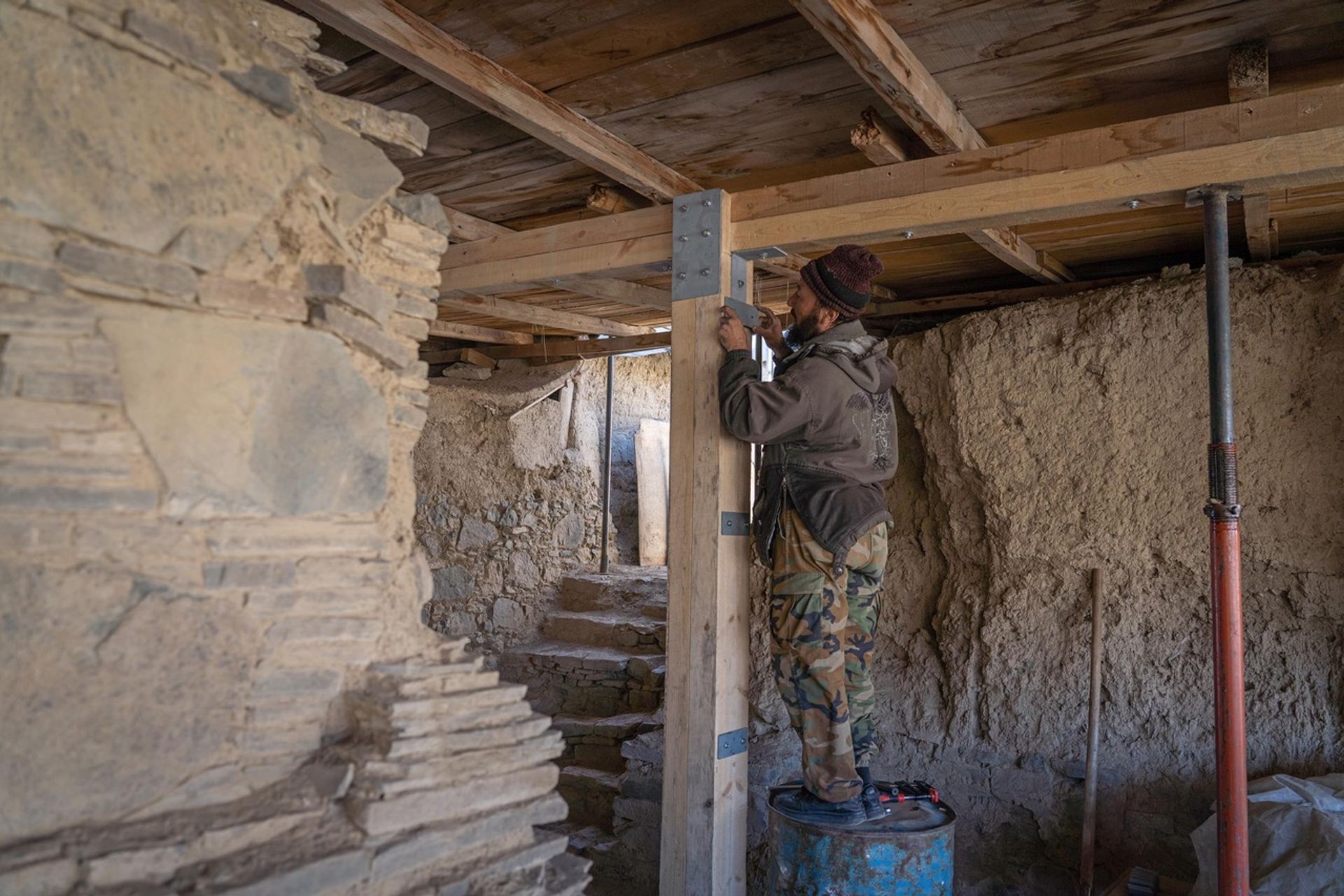The Taliban have backed an 18-month-long conservation project to safeguard the Afghan heritage site of Mes Aynak, a 2,000-year-old Buddhist city that is at risk of destruction from a long-delayed mining project.
Located around 40km southeast of Kabul in the province of Logar, Mes Aynak is thought to be home to the second largest untapped copper mine in the world, with deposits worth an estimated $100bn. In 2008, Afghanistan’s government under then-president Hamid Karzai signed a lucrative contract with a Chinese company to extract its riches through an open-pit copper mine.
The development, which will destroy the ancient city and all its buried secrets, was delayed to allow for further archaeological studies and the relocation of the site's valuable artefacts. With the Taliban takeover of Afghanistan in August 2021, fears grew that the new administration could prevent rescue efforts and press ahead with the mining operations. However, the new government has stressed its intention to preserve the site’s archaeological remains.
Now, as part of a $1m project funded by the Swiss foundation Aliph, the Aga Khan Trust for Culture (AKTC) has begun works to restore and repair temporary structures that protect more than 50 sites containing archaeological remains at Mes Aynak, including stupas, statues, wall and floor paintings.
These structures were “erected as far back as 2010” and many have “been deformed under the weight of snow and other environmental factors”, Ajmal Maiwandi, the chief executive of AKTC Afghanistan, tells The Art Newspaper. The project is intended to consolidate and replace them with stable protective structures.
The project will also include developing and executing a conservation plan for the ancient remains and a trial run to relocate several artefacts to a nearby site.
A panel of international specialists will soon be deployed to Mes Aynak, Maiwandi says. “When the conservation plan is in place we are going to consolidate as many of the artefacts as possible in the year that we have left.” A cataloguing process will identify and prioritise the most critical items.

The Aga Khan Trust for Culture has started working on the project’s first phase to stabilise and expand protective shelters above archaeological remains and artefacts at Mes Aynak Photo: courtesy of AKTC
Afghanistan's ministry of information and culture confirmed that works to safeguard the site's cultural heritage have commenced and that the Taliban government is committed to preserving its artefacts.
“The Mes Aynak mine is of economic and cultural value to Afghans. The ministry of information and culture is seeking to ensure that its economic benefits reach Afghans and its cultural and historical treasures remain safe,” says Atiqullah Azizi, Afghanistan’s deputy minister of culture and arts in a video recording provided to The Art Newspaper. He also called for cooperation with the international community in protecting the country’s historic monuments.
Maiwandi says the new conservation project at Mes Aynak is urgent because “without knowing exactly when mining operations could begin, we need to act fast”.
Excavations during the 15-year hiatus in development have also exposed many artefacts that were previously protected by the earth. “The other urgency is to stop the decay and by extension the further destruction of the artefacts through nature and progression of time,” Maiwandi adds.
Aliph, a global fund dedicated to the protection and rehabilitation of cultural heritage in conflict and post-conflict areas and currently one of only a handful of funders supporting cultural heritage projects in Afghanistan, says it remains committed to saving Afghanistan’s cultural heritage and to finding the best possible solution to preserve Mes Aynak.
“Mes Aynak has been described as one of the most important archaeological finds of the last four decades in the region. The archaeological site includes numerous Buddhist monasteries with stupas, sculptures, wall paintings, Zoroastrian temples, and traces of industrial activity dating to Late Antiquity,” says Sandra Bialystok, Aliph's director of communications and partnerships.
The Taliban's destruction of the Buddhas of Bamiyan in 2001 “was one of the driving reasons that Aliph was founded in the first place”, Bialystok adds. “The diverse cultural heritage of Afghanistan is a treasure of Afghan people and also part of the common heritage of humanity, so its protection is essential.”
The conservation project is expected to provide much-needed employment for 350 people in Afghanistan including labourers, architects, engineers, archaeologists and technical staff at a time when the country is experiencing one of the worst humanitarian crises in the world.
Maiwandi hints that in time the project could be extended to rescue more artefacts. “There are other sites that have to be excavated and more archaeology that needs to happen,” he says. “That is perhaps a phase two and even a phase three of this project. For us preserving heritage at this site is an important aspect of preserving Afghan cultural patrimony, the main reason that we are involved in the project.”


